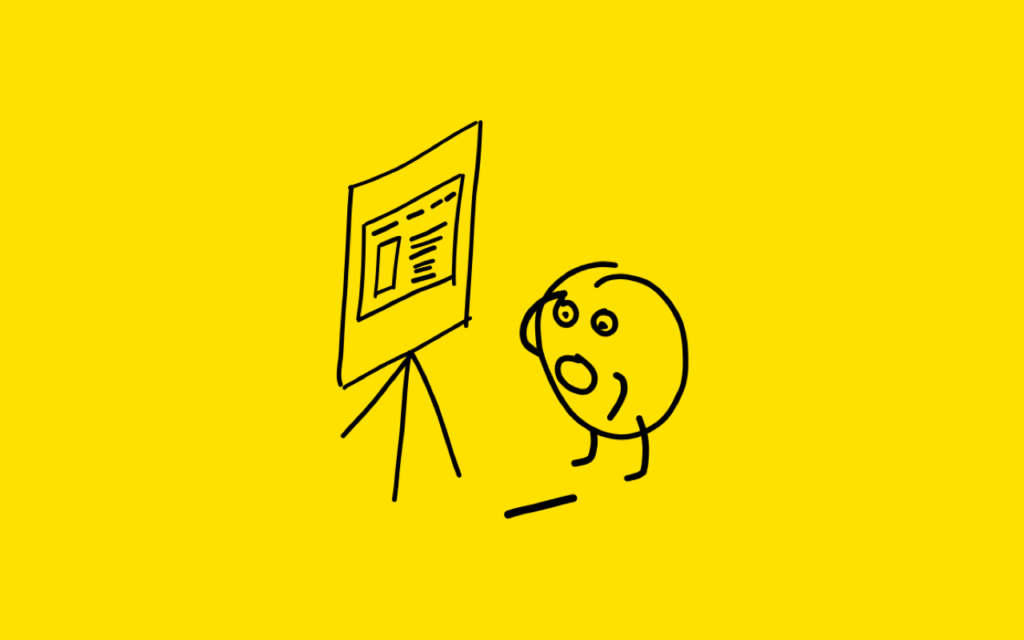Yes, that’s the TLDR. I like to write short, concise articles, propped up with hand-drawn scribbles. What was even up with all the fuss in the last article? So, we’re done here. Have a good one.

But seriously, let’s start with a story of archetypes to get back on topic and compare different perspectives in terms of how to approach projects.
The enthusiast
You had a quick first talk with a client and really believe you understood what they want from you. After some usual behind the scenes action like a proposal and other boring necessary entrepreneurial stuff, both parties agree to work together for a fixed price.
Fueled with enthusiasm you let your creative or tech juices flow, instantly take a deep dive into the work and prepare what has to be the most breathtaking thing you’ve ever made. Depending on the scope of the project you’ll agree to meetup days, weeks or months later with the client and present your masterpiece.
The client is amazed about how you delivered exactly what they don’t need. F***!

Every change of plans is now over budget, both monetary and in time, the relationship with the client is strained and they’ll probably won’t recommend you, even if you manage to limp to the finishing line somehow.
What went wrong? Everything? Could you still hit a homerun somehow? Sure … but do you like playing a game of chance when stakes are high?
Contrast this with another story.
The thinker
A client approaches you, because they think they need your services. You both agree to have a loose first talk about the general direction of the project. After the meeting you propose to give this some more quality time to deeply think about the clients needs for yourself. Outfitted with more knowledge and a mind full of inquisitive thoughts and questions you’ll meet again. You ask many questions, from stupid to brilliant – probably even some uncomfortable ones about budgetary constraints and if they really think this is what they actually need – to get an even better understanding about their business requirements.
At the end you decide to create some rough concepts to give the project a better chance at this crucial stage of birth. Maybe you’ll even prepare a MVP (minimum viable product) to test if the product or idea works or someone actually needs it. Test, talk some more, etc. … you get the gist of it.

Budgeting could be obviously set-up very differently here, with unique milestones and deliverables attached to each of them.
We want to avoid the looming danger of open-endedness and a project never being done. Make sure you deliver value and the second story could at any point end with both parties deciding not to work together any more, with a high likelihood of it ending on good terms. Afterall the client got at least something out of the process. You can even opt to recommend a better fit and get paid for your services this way.
Both remember each other as professionals.
So what’s the learning here?
Give yourself and the client some time and space to think thoroughly. Idea ping-pong is a thing and one question or answer leads to another. Thinking is more often quicker than creating in the long run, but there’s an unfortunate dichotomy hidden in here as well – at some point you have to start delivering something of value.
There are no stupid or “obvious” questions as you are not the expert in the clients business. They are, so stay curious. Try to approach each project by dividing it into smaller pieces instead of munching on the whole thing in one swoop.
Accept that your knowledge is one piece of the cake and worth something too.

“Be the least risky option”
Someone, somewhere
